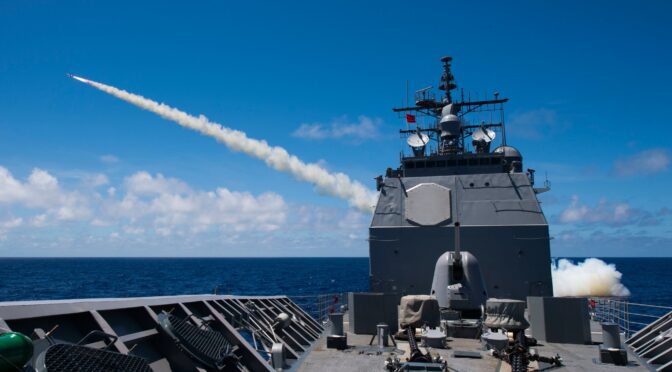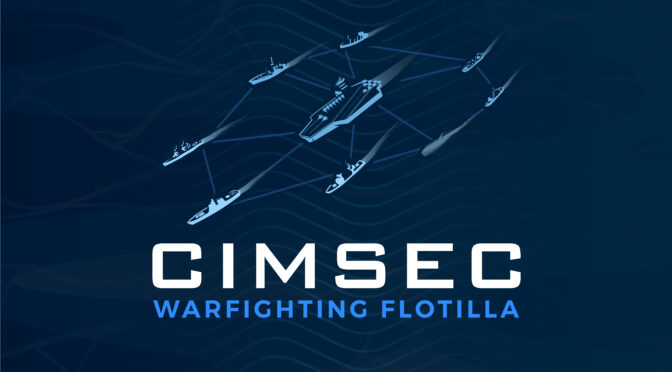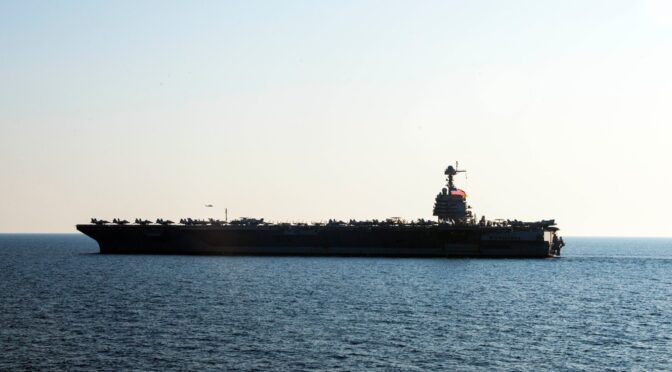By Dmitry Filipoff
In Large Scale Exercise 2023, numerous naval forces from around the world engaged in simulated warfighting under one global scenario. CIMSEC had the opportunity to discuss LSE23 with lead exercise planner Capt. Chris Narducci. In this discussion, Capt. Narducci describes what makes LSE unique, what the Navy is looking to learn from the event, and how LSE prepares the fleet for conflict against strategic competitors.
Many terms can be used to define Navy exercises, such as rehearsals, certifications, experiments, and others. How would you define LSE and its objectives?
LSE can definitely be classified as an “exercise,” however, it also included elements of experimentation. LSE was not a rehearsal for any specific operational plan, and no forces were certified during the exercise.
LSE’s end state objectives were to further refine Distributed Maritime Operations (DMO), and the supporting concepts of Littoral Operations in a Contested Environment (LOCE), and Expeditionary Advanced Base Operations (EABO) in order to build a more lethal force. LSE also sought to globally synchronize naval operations at the operational-to-tactical level of warfare. The exercise also sought to make naval forces better prepared to fight and win against strategic competitors through the use of a Live, Virtual, Constructive (LVC) training environment.
How is LSE different and complementary to other large Navy exercises, such as COMPTUEX and Fleet Battle Problems? What unique aspects does LSE afford the fleet the opportunity to exercise?
Other Navy exercises do not compare in scope and scale to LSE.
COMPTUEX is designed to certify a single live Carrier Strike Group (CSG) or an Amphibious Readiness Group (ARG) for deployment. The focus is at the tactical level from the 1-star staff down to the individual participating units. A COMPTUEX will typically include a second CSG or ARG staff participating virtually. A Fleet Battle Problem (FBP) typically involves a single live CSG or ARG. The FBP focus is also at the tactical level, while its purpose is to assess several elements of DMO and/or LOCE/EABO, as well as provide opportunity for experimentation.
LSE was unique in that it was able to stimulate the individual Sailor or Marine at the low tactical level all the way up to the 4-star fleet commanders at the high operational level of warfare. LSE participants were spread across 22 time zones and six geographic combatant command areas of responsibility. LSE had six CSGs (1 live, 5 virtual/constructive), four ARGs (virtual/constructive), as well as over a dozen additional ships and submarines participating live. LSE also provided the opportunity to assess many of the capabilities and elements of DMO and LOCE/EABO.
LSE included nine Navy Maritime Operations Centers (MOCs) operating as a Joint Force Maritime Component Commander (JFMCC) or as a numbered fleet commander.
The staffs included U.S. Pacific Fleet, U.S. Fleet Forces Command, U.S. Naval Forces Europe/Africa, Second Fleet, Third Fleet, Fourth Fleet, Fifth Fleet, Sixth Fleet, Seventh Fleet, and Tenth Fleet. Marine Forces Pacific, Marine Forces Command, and Marine Forces Europe/Africa embedded within their respective JFMCC staffs and served as Deputy JFMCCs during the exercise. While we may see several MOCs participate in a large combatant command-level exercise, LSE is the only exercise that brings together all nine fleet MOCs into one global scenario.
While a majority of the tactical-level exercising we saw in LSE could also be executed in events like a COMPTUEX or FBP, LSE is the only event where participants are given the opportunity to exercise global maritime synchronization at the operational level of warfare.
A major objective of LSE23 was testing concepts like DMO and EABO. How did LSE illustrate the differences between these concepts and how the Navy operated in the past?
The robust global threat scenario in LSE created an environment that required the participants (live or virtual) to operate using new operational concepts, like DMO and LOCE/EABO. The scenario forced participants to distribute and maneuver their forces while still remaining integrated across all warfare domains.
What was the role of the opposition force in stressing the concepts and servicemembers? How scripted versus free-play were the force-on-force events?
The exercise control group designed the scenario such that the laydown of the opposition force (OPFOR) created dilemmas not only for the tactical units, but also for the operational staffs (MOCs). The OPFOR laydown challenged the MOCs to globally synchronize their efforts across multiple areas of responsibility. Additionally, the OPFOR team utilized tactics representative of our strategic competitors that required the individual Blue (friendly) tactical units to operate using the concepts of DMO and LOCE/EABO.
LSE utilized a combination of scripted and free-play actions from the OPFOR team. While certain engagements may have been scripted to occur on certain days or in certain time blocks in order to drive exercise objectives, the OPFOR team was free to utilize the tactics required in response to Blue actions. Other engagements were at the discretion of the OPFOR director.
How would you describe the learning architecture surrounding the event? Whether in terms of feedback loops, analytic frameworks, data capture, or debriefings, how is the Navy gathering and processing the lessons learned?
LSE was designed to provide real-time feedback during execution, as well as to observe and collect large amounts of data for post-execution assessment. There were over 100 personnel from multiple commands positioned at various locations across the globe to collect on and ultimately assess the exercise.
The Exercise Steering Group (ESG) was led by retired U.S. Navy Admiral Scott Swift, and consisted of four retired admirals and generals. The ESG was tasked to provide real-time feedback to the exercise control group during exercise execution. The ESG observed efforts from Exercise Control at the Naval Warfare Development Center (NWDC) in Norfolk, VA. They also participated in multiple daily video teleconferences (VTCs) with observers/assessors at each of the MOCs. If the ESG saw issues that could affect achievement of exercise objectives, or if they saw opportunities to improve exercise design or execution, they provided that feedback to Exercise Control.
An exercise “hotwash” VTC was conducted at the completion of LSE. The hotwash provided an opportunity for the exercise director, the ESG, higher headquarter role players (11 additional retired admirals and generals led by retired U.S. Navy Admiral James Foggo), and the JFMCC commanders to share their observations and lessons learned of both participant execution and the design of the exercise.
The Center for Naval Analyses (CNA) is in the process of analyzing data that they and multiple other observers and assessors collected during execution. Data was collected from direct observation, electronic LVC playback, the hotwash, and the ESG. The CNA after-action report will include recommendations and lessons learned. The recommendations and lessons learned will support multiple feedback loops. Those loops include:
- Tactics, Techniques, and Procedures (TTPs) updates/development
- Training syllabus updates
- Capability gap and future requirements identification in support of future budget requests
- Exercise design for future LSEs
This is the second iteration of the Large Scale Exercise series, and the next is planned for 2025. How is the Navy linking the LSEs and their lessons learned over the arc of the series?
As mentioned, one of the feedback loops from LSE is the design of the exercise. The planning team took numerous exercise design lessons learned from LSE 2021 and incorporated them into the LSE 2023 design. We are in the process of analyzing initial LSE 2023 lessons learned, and additional lessons learned will be pulled from the final after-action report. The planning team will then determine which of those lessons we can action as we begin LSE 2025 planning in early 2024.
Capt. Chris Narducci is a 1996 graduate of the U.S. Naval Academy. He has completed multiple tours as a P-3C Orion pilot. His additional assignments included action officer with the Joint Staff J6, command of the 33d Flying Training Squadron, Vance AFB, and as navigator on USS Harry S Truman. He has been serving as the LSE lead planner with U.S. Fleet Forces Command since August 2019.
Dmitry Filipoff is CIMSEC’s Director of Online Content. Contact him at [email protected].
Featured Image: ADRIATIC SEA (August 14, 2023) Aircraft carrier USS Gerald R. Ford (CVN 78) steams in formation alongside the Blue Ridge-class command and control ship USS Mount Whitney (LCC 20), the flagship of U.S. 6th Fleet. (U.S. Navy photo by Mass Communication Specialist 2nd Class Mario Coto)





